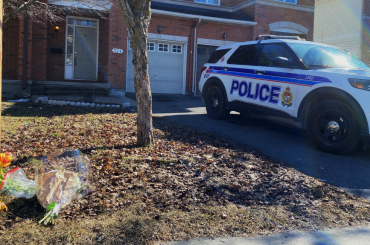In the legal world, the term “statute of limitations” refers to the time limit within which a lawsuit must be filed. In California, this concept is particularly significant in cases of wrongful death, where the law sets a 2-year limit for families to initiate legal proceedings following the death of a loved one. This timeframe is crucial because it dictates the period during which families can seek justice and compensation for their loss.
The 2-Year Statute of Limitations:
In California, the general rule for filing wrongful death claims is straightforward yet strict: such claims must be filed within two years from the date of the victim’s death. This 2-year statute of limitations serves as a critical deadline for families seeking legal recourse following the loss of a loved one due to someone else’s wrongful act. It’s essential to recognize the importance of this timeframe, as failing to file within these two years typically results in the loss of the right to bring the claim to court. This time limit ensures that cases are prosecuted while evidence is still relatively fresh and memories of the event are clear.

Medical Malpractice Cases:
When a wrongful death claim arises from medical malpractice, the statute of limitations has specific nuances. In these cases, the family of the deceased has either one year from the date they discover, or should have discovered, the death was caused by medical negligence, or three years from the date of the actual death, whichever comes first. This distinction acknowledges the complexity and sometimes delayed discovery in medical malpractice cases, where the cause of death might not be immediately evident.
Claims Against The Government:
Wrongful death claims involving government entities or employees follow a different timeline. In these cases, the statute of limitations is significantly shorter – just six months from the date of the victim’s death. This expedited timeframe reflects the special procedures involved when suing a government body and underscores the need for prompt action when the wrongful death involves a public entity or its personnel. Understanding this distinction is crucial for families contemplating legal action against a government entity to ensure their rights are preserved.
Minors Suing for Death of a Parent:
The statute of limitations for wrongful death claims in California has special provisions when it involves minors, particularly in cases where a minor wishes to file a claim for the death of a parent. Generally, the law allows a minor to file a wrongful death lawsuit within two years after they reach the age of majority, which is 18 years old.
This extension is significant as it acknowledges that minors may not have the capacity or resources to initiate legal proceedings immediately following the loss of a parent. Therefore, if a parent dies when the child is still a minor, the child has until their 20th birthday to file a wrongful death claim. This extended timeframe ensures that minors are given a fair opportunity to seek justice and compensation for their loss.
Example Scenario:
Imagine a situation where a parent tragically dies in a car accident when their child is only 12 years old. Under normal circumstances, the 2-year statute of limitations would mean the deadline for filing a claim would be two years from the date of the parent’s death. However, given the child’s minor status, this rule is modified. Instead of the deadline being when the child is 14, the law allows the child until they turn 20 (two years after reaching the age of majority) to file a wrongful death lawsuit. This provision ensures that the child has adequate time to understand their legal rights and pursue the claim once they are legally an adult.

How Wrongful Death Claims Work?
Under California law, wrongful death claims are legal actions taken by the family or dependents of a person who has died as a result of someone else’s wrongful act or negligence. The primary purpose of these claims is to provide financial compensation for the survivors who have suffered loss due to the death. This legal process recognizes the impact of the loss on the family and seeks to mitigate the financial and emotional damages resulting from it.
Who Has Standing to Bring a Claim?
In California, the following parties typically have the standing to file a wrongful death claim:
- Surviving Spouses or Domestic Partners: They can seek damages for the loss of their life partner.
- Children of the Deceased: This includes biological and adopted children.
- Dependent Minors: If they resided in the deceased’s household for at least six months and were dependent on them for at least 50% of their support.
- Other Heirs: This includes parents, siblings, or other individuals who would be entitled to the property of the decedent under California’s intestate succession laws if no other qualifying relatives are alive.
Possible Damages:
The types of damages that can be recovered in a wrongful death lawsuit include:
- Burial and Funeral Expenses: Costs associated with funeral services and burial.
- Lost Income and Potential Earnings: Financial support the deceased would have contributed during their lifetime.
- Loss of Companionship and Support: Compensation for the emotional and relational loss suffered by the family members.
- Value of Household Services: The estimated value of services the deceased provided, such as childcare, home maintenance, etc.
Survival Actions Distinguished:
Survival actions differ from wrongful death claims in several key aspects:
- Claimant: Survival actions are brought on behalf of the deceased person’s estate, not the family members.
- Damages: In survival actions, damages are sought for losses the deceased person suffered from the time of the wrongful act until their death. This can include medical expenses, lost wages, and pain and suffering endured by the deceased.
- Punitive Damages: Unlike wrongful death claims, survival actions may include punitive damages if the wrongful act was particularly egregious.
One Action Rule:
In wrongful death cases in California, the “one action rule” plays a crucial role. This rule mandates that all eligible heirs of the deceased must join together to file a single wrongful death lawsuit. The purpose of this rule is to prevent multiple lawsuits against the same defendant for the same cause of death, thereby promoting judicial efficiency and reducing the burden on the courts.
The one action rule requires that the lawsuit encompasses all the claims of each eligible heir. This collective approach ensures that the defendant is not subject to repetitive legal actions for the same incident and that all potential claims are addressed in a single legal proceeding.
Exception for Minors:
A significant exception to the one action rule concerns minors who were not included in the initial lawsuit. In such cases, minors who are heirs of the deceased have the right to bring a subsequent lawsuit once they reach the age of majority, if they were not part of the initial legal action. This exception acknowledges the unique status of minors in the legal system and ensures that their rights are protected, even if they were initially overlooked in the wrongful death claim process.
As each wrongful death case has its unique circumstances and challenges, consulting with an experienced attorney is invaluable. Legal professionals can provide guidance, help navigate the intricacies of the law, and ensure that the rights of all parties involved are represented and upheld. In conclusion, while no legal action can truly compensate for the loss of a loved one, understanding and utilizing the legal avenues available can provide a pathway to some measure of justice and closure.




